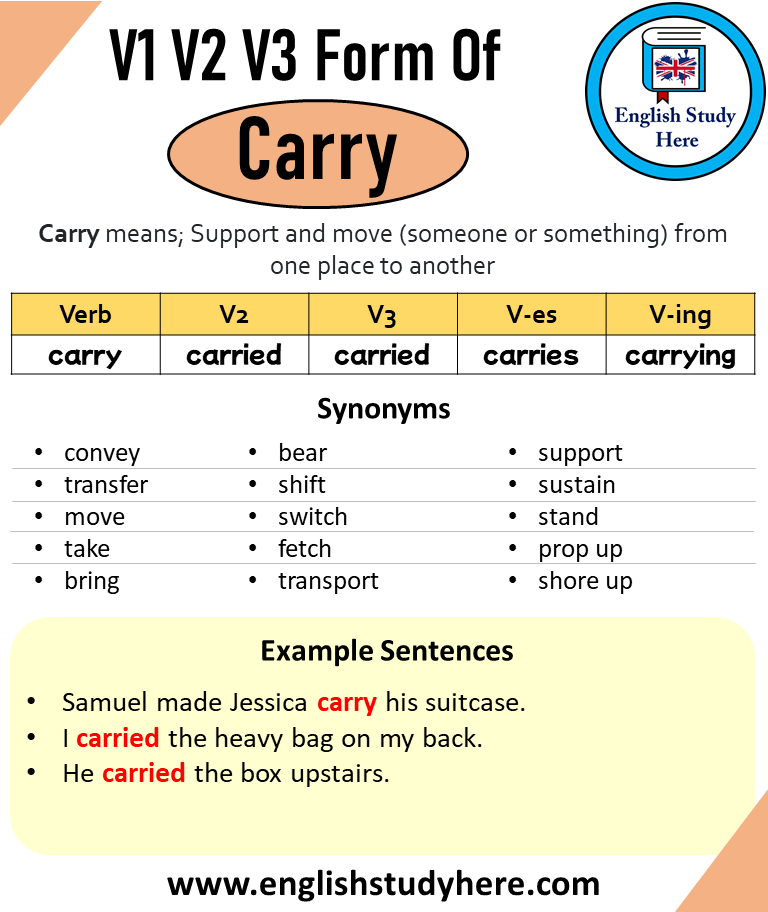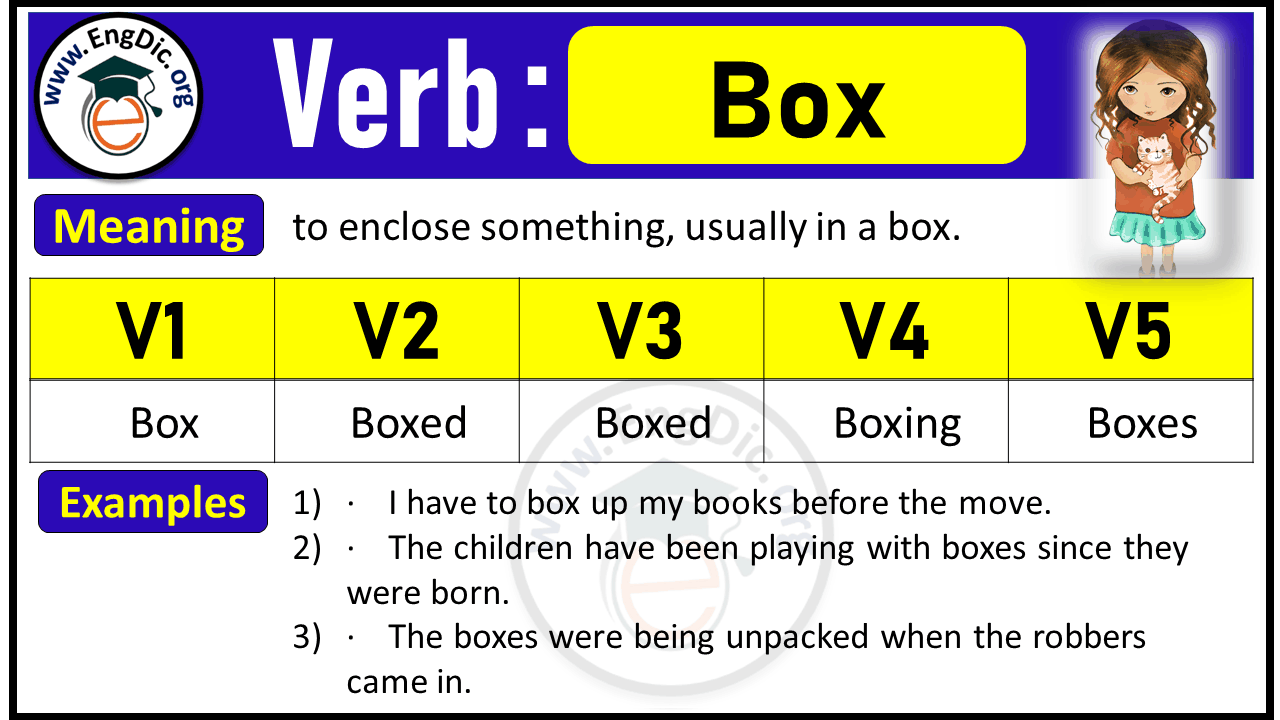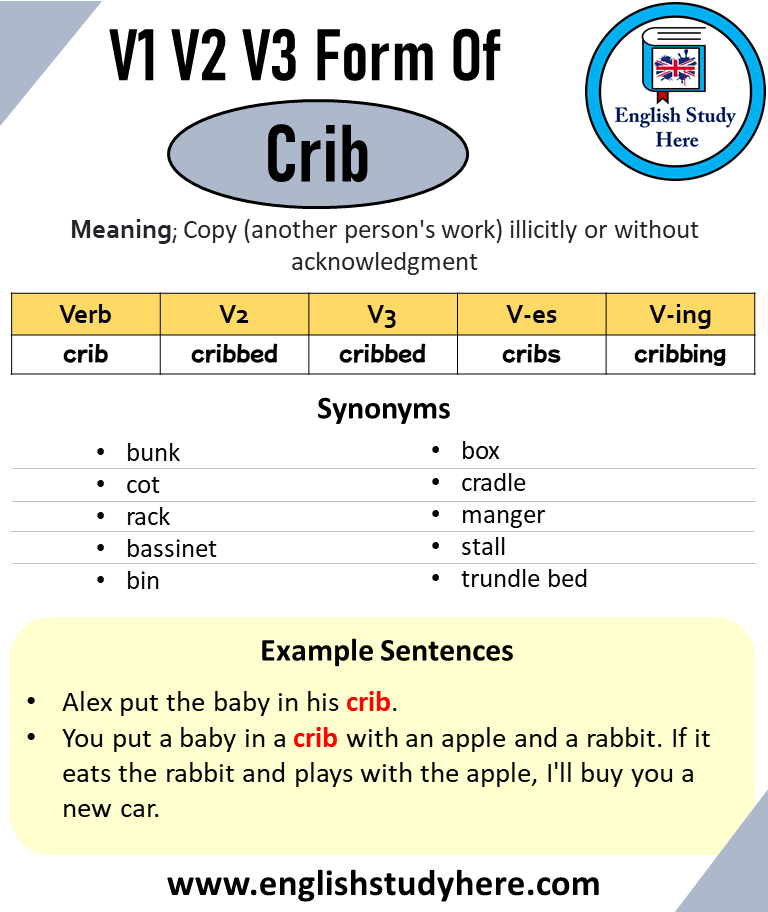Box Past And Past Participle Form V1 V2 V3 V4 V5 Form of Box
Ever found yourself puzzled by English grammar, especially when it comes to verb forms? You’re not alone.
Understanding the past and past participle forms of verbs can be tricky, but it’s essential for mastering the language. Today, let’s dive into the verb “box” and unravel its various forms: V1, V2, V3, V4, and V5. Whether you’re learning English as a second language or simply brushing up on your grammar skills, this guide is tailored just for you.
We’ll break down each form with clarity, ensuring you grasp the nuances and can apply them confidently in your writing and conversations. So, if you’re ready to transform confusion into clarity and power up your grammar skills, keep reading. This could be the game-changer you’ve been waiting for!

Credit: englishstudyhere.com
Forms Of The Verb ‘box’
The verb ‘box’ has different forms. Present form is ‘box’. Past form changes to ‘boxed’. Past participle is also ‘boxed’. These forms help us talk about actions in different times.
Verbs can change form to show time. V1 is the base form. V2 is the past form. V3 is the past participle form. These forms are used in sentences with different tenses.
| Form | Verb |
|---|---|
| V1 | box |
| V2 | boxed |
| V3 | boxed |
| V4 | boxing |
| V5 | boxes |
Box is used for present actions. Boxed is used for past actions. Boxed is also used in perfect tenses. Boxing shows ongoing actions. Boxes is for third person singular.

Credit: engdic.org
Usage Of Past And Past Participle
Box is a simple word. But it has different forms. Past form is boxed. Past Participle form is also boxed. These forms help in writing. They show actions in different times.
In sentences, using the right form matters. It helps to know if an action is done. Present form tells what is happening now. Past form tells what happened before. Past Participle can show actions completed.
Verbs have five forms: V1, V2, V3, V4, and V5. V1 is the base form. V2 is the past form. V3 is the past participle. V4 is the present participle. V5 is the s-form.
Examples In Sentences
The kids boxed up their toys last night. They had fun boxing everything neatly. Boxing things helps keep the room clean. They have boxed them many times before. Boxed toys are easy to find.
Mom boxed a gift for the party. She enjoys boxing gifts for friends. Boxed gifts look nice and tidy. She has boxed many gifts this year. Boxing gifts is her hobby.
The store boxed items for shipping. Workers are busy boxing all day. Boxed packages reach homes safely. They have boxed countless items this month. Boxing items helps in organizing.

Credit: englishstudyhere.com
Conclusion
Understanding the forms of “box” enriches language skills. The verb “box” adapts through different tenses seamlessly. This helps you express actions clearly. V1 is “box,” V2 becomes “boxed,” and V3 is also “boxed. ” V4 is “boxing,” while V5 returns to “boxes.
” Each form plays a crucial role. Using these forms effectively enhances communication. Practice these variations in daily conversations. This builds confidence and proficiency. Remember, language learning is a journey. Keep exploring and practicing. Your skills will improve over time.
Embrace the nuances of English. It enriches your interactions and broadens understanding.





